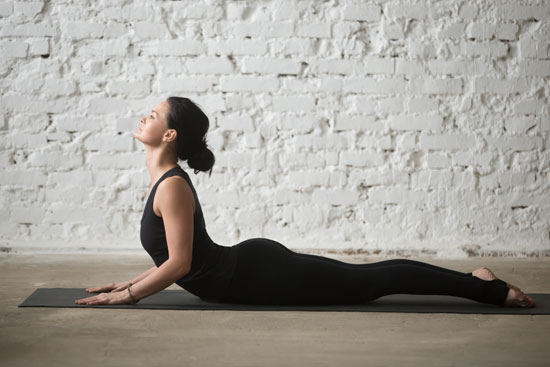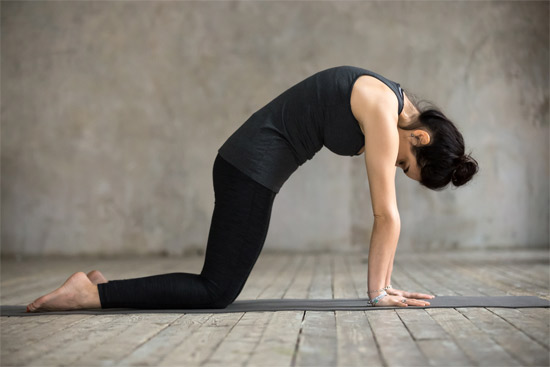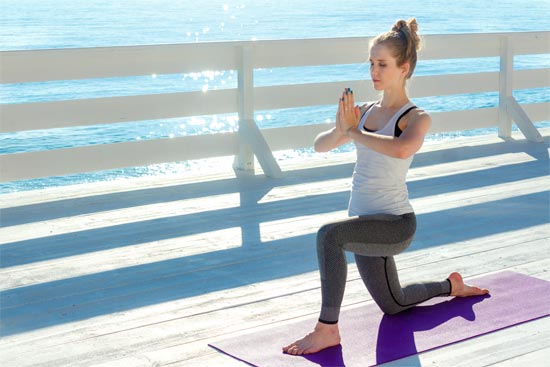Top Tips to Ease Back Pain
Back pain is one of the most common health complaints across the globe, and the No. 1 cause of job disability.1 It's also one of the most common reasons triggering opioid dependence, the side effects of which can be lethal. In fact, by 2017 opioids were now the leading cause of death among Americans under the age of 50,2 and more than 202,600 Americans died from overdosing on these potent pain killers between 2002 and 2015 alone.3
According to a recent population study,4,5 opioids are the most commonly prescribed medication for people with chronic low back pain, and as you'd suspect, these drugs are typically used long-term in this population. This flies in the face of guidelines from the American College of Physicians, which recommend heat wraps and exercise as a first line of treatment, stressing that prescription drugs should only be used as a last resort.6
Another recent study7,8 found a strong link between chronic back pain and mortality in women, and while the authors laid the bulk of the blame on decreased activity, the use of narcotic pain killers is another likely contributor.
Meanwhile, other recent research9 shows opioids (including morphine, Vicodin, oxycodone and fentanyl) fail to control moderate to severe pain any better than over-the-counter (OTC) drugs such as acetaminophen, ibuprofen and naproxen. In fact, those taking nonopioid pain relievers actually fared "significantly better" in terms of pain intensity.
Lead author Dr. Erin Krebs with the Minneapolis VA Center for Care Delivery and Outcomes Research (formerly Chronic Disease Outcomes Research), told WebMD:10
"We found that opioids had no advantages over nonopioid medications for pain, function or quality of life in patients with low back pain … This is important information for physicians to share with patients who are considering opioids."
Here, I'll provide you with a variety of strategies that can help you avoid this toxic trap by building a strong, pain-free back.
Move More and Stand Correctly to Protect Your Back Health
Two effective means of preventing lower back pain are closely related: staying active and minimizing sitting. Both will improve muscle strength and coordination, reduce stiffness and improve blood flow, which may reduce back pain and lower your risk of developing back pain in the first place.
Oftentimes, back pain originates from tension and muscular imbalances. For example, sitting for long periods of time ends up shortening the iliacus, psoas and quadratus lumborum muscles that connect from your lumbar region to the top of your femur and pelvis. When these muscles are chronically short, it can cause severe pain when you stand up as they will effectively pull your lower back (lumbar) forward.
By bringing these muscles into better balance, you will remedy many of these common pains and discomforts. Overuse and misuse of the muscles supporting your spine, poor muscle strength and inappropriate posture while sitting, standing and walking are other common causes of low back pain.
For instance, when walking with your toes pointed outward, the muscles in your hips and lower back tighten, increasing your risk for lower back pain. Sitting with your shoulders hunched over a computer screen stretches muscles in your upper back and places added stress on your lower back, increasing your risk for both lower and upper back pain.
Walking with your head down is yet another posture-related problem that has repercussions on the rest of your back and hips,11 as your head is the single heaviest part of your body and will throw everything out of alignment. If poor posture is a culprit, consider doing some exercises to stretch out your shoulders, open up your hip flexors, and lift your chest.
That said, research suggests the treatment of choice for lower back pain is maintaining physical activity.12 If the pain is severe, you may have to ease up on your usual activities, but continuing some activity is necessary. Studies have demonstrated bed rest may actually extend your disability by promoting muscle stiffness and spasms.13
3 Exercise Techniques That Address Back Pain
Foundation Training teaches all those muscles to work together through integrated chains of movement, which is how your body is structurally designed to move. Every muscle that directly connects to your pelvis should be considered a piece of your core and this includes your glutes, adductors (inner thigh muscles), deep lower back muscles, hip flexors, hamstrings and all of your abdominal muscles.
Having strong, balanced core muscles is like having a built-in corset that not only holds your gut in, but also stabilizes your spine, vertebrae, discs and your pelvis. Teaching your body to naturally support itself at the deepest level is going to be far more effective than strapping on an external back brace, which over time can lead to even weaker musculature.
It is completely safe and appropriate for everyone from highly trained athletes, to newborns, pregnant women and the elderly and infirm. To find an NST therapist near you, see our NST Therapists Page. You can also purchase a DVD set to learn more about this technique.
6 Simple Stretches to Help Relieve Lower Back Pain
Aside from core strengthening exercises such as Foundation Training, stretching is also important, as tight and stiff muscles and lack of flexibility will contribute to back pain. There are many options here, including the six highlighted below.19 If these stretches cause pain, stop doing them and consult your doctor, chiropractor or massage therapist before continuing.
You may experience mild discomfort when you begin doing these stretches, especially if you are new to exercise or it has been a long time since you last exercised. My advice is to take it slowly and gradually increase your tolerance to these stretches over time.

Baby cobra — Lie on your stomach with your legs together, arms bent and palms on the ground at chest level, elbows bent. Begin with your forehead on the ground. Inhale and lift your chest, keeping the back of your neck long and your chin relaxed. Exhale and return your forehead to the mat. Repeat a few times, focusing on your breath. |

Bird dog — This stretch engages your back muscles, buttocks and hamstrings, as well as your core and shoulders. Begin on all fours, then lift and extend one leg and the opposite arm at the same time. Hold for three to five breaths. Switch sides and raise and hold the opposite arm and leg for three to five breaths. |

Cat/cow — Begin on your hands and knees and place your hands directly under your shoulders and your knees under your hips. On your inhalation, drop your belly and lift your gaze up to the ceiling. When you exhale, round your spine so your tailbone drops between your thighs and your head lifts between your arms. Repeat multiple times, slowly, to gently increase spinal mobility. |

Psoas lunges — Your psoas muscle extends from your lowest vertebrae to the top of your thigh, putting it in a good position to stress your lower back when it becomes tight. A great way to stretch your psoas is through lunges. Begin with your right leg in front of you and your left knee on the floor. Tuck your buttocks slightly and place your hands on your forward knee or your hips. Allow your hips to gently shift forward as you breathe for three to five breaths. Change legs and repeat on the other side. |

Squat — Separate your legs a little more than hip-distance apart and bend your knees so your thighs are parallel to the ground. Keep your heels on the ground. Press your palms together and hold them at chest height. Use your elbows to release your knees apart. If this is too hard on your hips you can sit on a yoga block, stool or a few books. Maintain the position for three to five breaths. |

Twist — Twists help rotate and lengthen your spine and can be performed sitting in a chair or while lying or sitting on the ground. Begin on your back and bring your knees up to your chest. Gently allow your legs to fall to one side and turn your torso in the opposite direction, extending your arm. Breathe in this position for 30 seconds and then repeat on the other side. You can do this stretch sitting by raising your arms and twisting gently from your torso. If seated in a chair, you can grip the arm of the chair with one hand and put the other hand on the opposite leg. Extend your spine on the inhale and twist a little further on the exhale. Repeat on the other side. |
When to See a Doctor
Although back pain is definitely serious, as it affects your everyday life and can suck the joy out of your days for a week or more, it is often not dangerous. In other words, the severity of your pain does not indicate your condition is medically dangerous.
However, there are some signs and symptoms that might suggest the pain you're experiencing is not common low back pain from a muscle strain or sprain, but might be something more serious requiring physical assessment and treatment.23,24,25 Should your back pain be accompanied by any of these symptoms, a thorough medical checkup would be in order to rule out a more serious problem.
- Fever
- Difficulty passing urine
- Previous high risk of fracture
- Loss of bladder or bowel control
- Feeling like you need to pass urine but there is none
- Loss of muscle strength or sensation in the legs
- Night back pain not relieved by adjusting in bed or starting only at night
- Impaired sexual function, such as loss of sensation, numbness or tingling in the genitals or buttocks
- Pain in your upper or lower back not tied to a specific joint or muscle may signal a heart attack
- 1 The Lancet March 22, 2018
- 2 CBS News June 6, 2017
- 3 Drugabuse.gov Overdose Death Rates as of September 2017
- 4 Journal of Pain October 2018; 19(10): 1104-1112
- 5 Clinical Pain Advisor May 16, 2018
- 6 NBC News, March 21, 2018
- 7 Journal of General Internal Medicine October 22, 2018 [Epub ahead of print]
- 8 Medical News Today December 25, 2018
- 9 JAMA March 6, 2018;319(9):872-882
- 10 WebMD March 6, 2018
- 11 A Vogel, August 18, 2015
- 12, 13 Medical Xpress, March 22, 2018
- 14 Journal of the American Medical Association 2017;317(14):1451-1460
- 15 Journal of American Medical Association, 2018;1(1):e180105
- 16 Medscape, May 21, 2018
- 17 Reuters Health, May 21, 2018
- 18 International Research and Philosophy Symposium. Sherman College of Straight Chiropractic. Spartanburg, SC. October 910, 2004
- 19 HealthyWay July 11, 2018
- 20 Harvard Health April 25, 2016
- 21 Physical Therapy May 1, 2011; 91(5): 700-711
- 22 Tmswiki.org, Introduction to Tension Myositis Syndrome
- 23 BBC, March 21, 2018
- 24 Prevention, March 3, 2017
- 25 Cleveland Clinic Journal of Medicine, 2008, 75(8):557









Comments